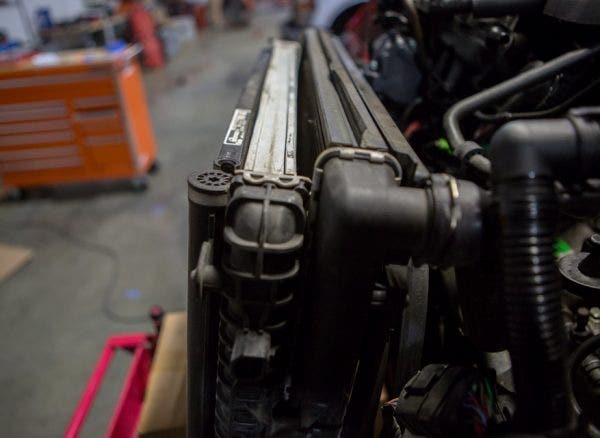
Poster Boy - Performance Intercooler R&D, Part 1 - Stock Review
By now the pedigree of the Volkswagen GTI is widely known. It's been around for what feels like forever in a handful of different variations, and more or less invented the hot-hatch segment. Now that we're on the 7.5th generation, and rapidly approaching the 8th, the MK6 is quickly becoming the poster boy for the VW enthusiast scene.

The MK6 ended up being more of a visual improvement over the MK5. The facelift that came about in 2009 added some edges to the rounded and bubbly styling of the GTI's younger generation. The interior was rejuvenated and given the success of the TSI series' engines over the FSI, the engine bay more or less remained the same as the later MK5s except for a slight bump in power. Now that this generation is going on its second cycle, many are increasing the power even more by means of intakes, big turbos, and upgraded tuning. There's one thing these all have in common though, they all require an intercooler that's up to snuff.

Volkswagen, and characteristically German manufacturers in general, are notorious for their efficient use of space. Given the bang-to-buck ratio from a small platform such as the Golf, they don't exactly have much of a choice. Volkswagen decided to employ a "front" mounted intercooler in the MK6 GTI platform. I say "front" because technically it is mounted in the front of the vehicle, but as the meat in an AC condenser and radiator hoagie. This placement means that even with the large core surface, it's still strangled by the condenser hanging in front, not to mention the effect it will have on the radiator.

Efficient use of space was taken to a new level with the MK6, where VW coated their radiators with a catalyst like what's found in the exhaust's catalytic converter. The drawback, for us at least, is that it requires the use of this PremAir sensor to operate properly, just about eliminating the small amount of extra space between the intercooler and radiator.

Upon dissecting our MK6 GTI loaner vehicle and removing the stock intercooler unit, we found the elements of good intercooler design. For starters, what the core lacked in thickness, it made up for in surface area. When it comes to removing heat from exchangers, the more access the cold air has to the surface, the better. However, the thin core combined with the tube-and-fin construction will still lead to heat-soak, especially under high boost conditions.

Even with the large surface area, the stock intercooler still lacks the extra assistance from thickness. The perfect combination of surface and volume are what make these heat exchangers operate better.

A curve ball we discovered is the fact that VW employs quick-disconnect fittings on the end sections of the intercooler piping, something that we'll have to contend with in the later stages.

Under closer inspection, the lack of volume and less than ideal mounting location aren't the only elements that we're contending with. The construction materials don't exactly help with the design of this stock intercooler. The end tanks, while featuring an ergonomic design to assist in airflow, are plastic. This might help cut the costs and save weight in mass production but can also become a weak point once the boost is turned up.

Ye works on scanning the stock intercooler into our design software, along with the front section of the GTI. Having a digital version of these components will assist greatly in the creation of the physical prototypes.
There are several things that are common knowledge about the GTI these days: it's long-standing history with enthusiasts, how to improve on the power, and that the stock intercooler can be a roadblock in the path for that extra grunt. Luckily though, we here at Mishimoto are in the process of clearing that roadblock and replacing it with a more efficient intercooling system.
Thanks for Reading!
-Nick




